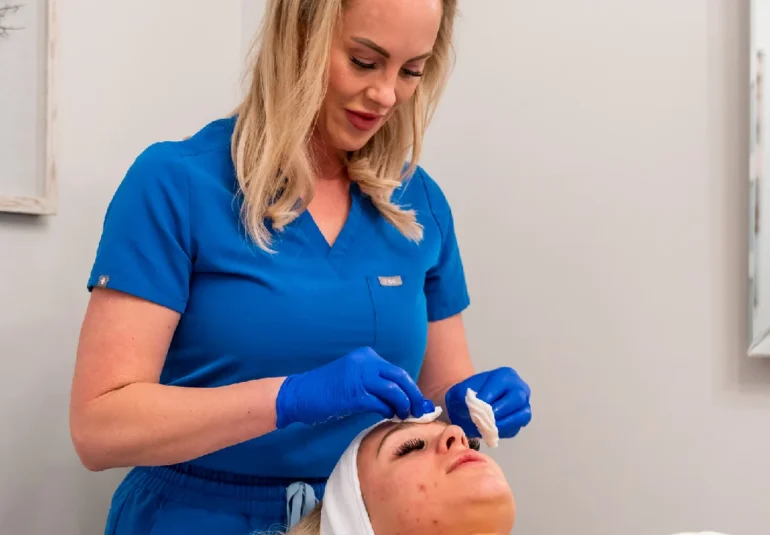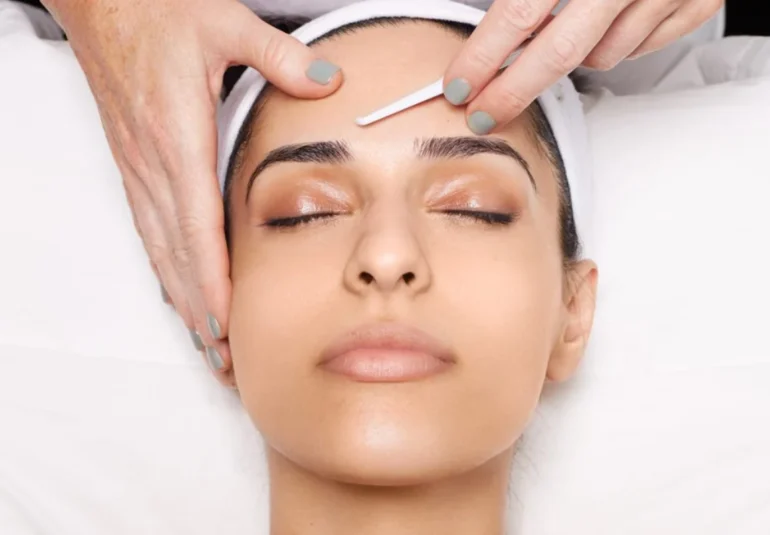
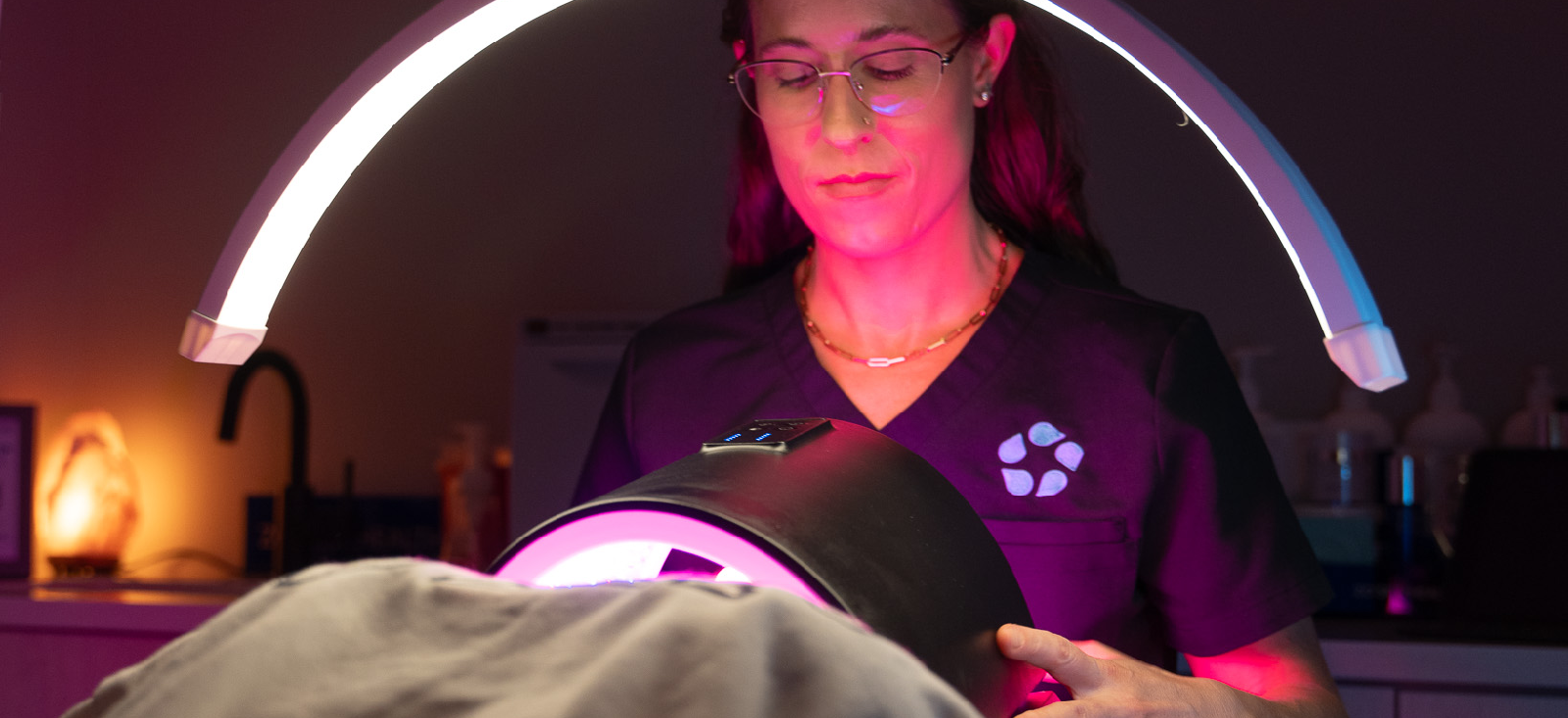
Table of Contents
Join us at Relive Health Hendersonville for a transformative experience with UV Light Therapy, a groundbreaking approach reshaping the world of skin health and treatment. This avant-garde therapy, steeped in a rich historical legacy, leverages the formidable power of ultraviolet light to comprehensively address a wide range of skin conditions and diseases. At Relive Health Hendersonville, we are committed to excellence, offering premier UV Light Therapy services that guarantee our clients receive unparalleled, personalized care. Immerse yourself in the enlightening journey of UV Light Therapy, as we delve into its storied past and its significant impact on modern health and wellness practices.
Unraveling the Historical Threads of UV Light Therapy
UV Light Therapy, far from being a mere product of modern medical advancements, has a storied history that spans several centuries. Its therapeutic properties have been recognized and revered throughout time, offering a glimpse into the enduring power of natural healing methods. This ancient practice, once rooted in the simple act of sun exposure, has evolved into a sophisticated medical treatment, thanks to the relentless pursuit of medical innovation and understanding.
The Evolution of UV Light Therapy
The journey of UV Light Therapy from ancient times to the present day is a fascinating tale of scientific progress and cultural adaptation. In ancient civilizations, the healing properties of sunlight were intuitively understood and utilized for treating various skin ailments. This rudimentary form of light therapy laid the groundwork for future scientific exploration.
As we progressed into the 19th and 20th centuries, the field of medicine began to recognize the specific benefits of ultraviolet light. Pioneers like Niels Ryberg Finsen brought scientific rigor to this practice, transforming it from a traditional remedy to a medically endorsed treatment. His work not only demonstrated the effectiveness of UV light in treating skin conditions but also paved the way for future innovations.
The Science Behind UV Light Therapy
Today, UV Light Therapy is a testament to the intersection of historical wisdom and modern science. It operates on the principle that controlled exposure to ultraviolet light can have therapeutic effects on the skin. This is not a one-size-fits-all solution; rather, it is a highly personalized treatment that considers the unique needs and conditions of each individual. At Relive Health Hendersonville, our approach to UV Light Therapy is rooted in this understanding. We utilize the latest technology and research to ensure that every treatment is safe, effective, and tailored to the specific needs of our clients.
The Spectrum of Conditions Treated by UV Light Therapy
The versatility of UV Light Therapy is one of its most remarkable aspects. It has proven effective in treating a variety of skin conditions, from common issues like psoriasis and eczema to more complex diseases like vitiligo. Each condition benefits from a specific type and intensity of UV light, and our experts at Relive Health Hendersonville are adept at determining the most effective treatment plan for each individual case.
At Relive Health Hendersonville, we are not just offering a treatment; we are providing a gateway to improved health and wellbeing. UV Light Therapy, with its rich historical roots and modern scientific backing, stands as a beacon of hope and healing in the realm of dermatological care. We invite you to experience the transformative power of this revolutionary therapy and embark on a journey towards better skin health and overall wellness.
A Journey Through Time
Ancient Egypt: The Dawn of Light Therapy
In the sun-drenched lands of Ancient Egypt, the practice of sunbathing was more than a leisure activity; it was a therapeutic regimen. The Egyptians, renowned for their advanced medical knowledge, intuitively understood the healing properties of sunlight. They regularly engaged in sunbathing to alleviate a variety of skin issues, ranging from simple rashes to more complex conditions. This early form of light therapy was based on the principle that the sun’s rays could restore health and promote well-being, a belief that laid the foundation for modern UV Light Therapy.
19th Century: Niels Ryberg Finsen’s Pioneering Work
Fast forward to the 19th century, where Niels Ryberg Finsen, a Danish physician, made groundbreaking strides in the field of light therapy. Finsen’s interest in the therapeutic potential of light led him to explore the effects of concentrated light sources on skin diseases. His most notable work involved the treatment of lupus vulgaris, a severe skin infection caused by tuberculosis bacteria. Finsen developed a method of treating this condition using concentrated UV light, which proved remarkably effective. His pioneering work not only brought relief to many suffering from this debilitating disease but also earned him the prestigious Nobel Prize in Medicine in 1903. Finsen’s contributions significantly advanced the medical community’s understanding of the therapeutic potential of light, particularly UV light.
20th Century: The Advent of Medical-Grade UV Lamps
The 20th century marked a significant evolution in the application of UV Light Therapy, thanks to the development of medical-grade UV lamps. This technological advancement revolutionized the field, allowing for more controlled and precise treatments. Unlike the broad and uncontrolled exposure to sunlight in ancient times, these UV lamps enabled healthcare professionals to administer specific wavelengths of UV light in a safe, regulated manner. This precision dramatically enhanced the effectiveness of the treatment and expanded its applications. Conditions like psoriasis, vitiligo, and eczema, which were once challenging to manage, became more treatable with these advancements. The introduction of medical-grade UV lamps signified a new era in dermatological care, offering hope and relief to millions suffering from various skin conditions.
Exploring the Intricacies of UV Light Therapy
UV Light Therapy, also known as phototherapy, is a complex and nuanced treatment modality that involves the strategic exposure of the skin to ultraviolet light. This sophisticated process is far more intricate than merely basking in sunlight; it requires a deep understanding of dermatological science, precision in execution, and the latest in medical technology.
The Science Behind UV Light Therapy
At its core, UV Light Therapy is grounded in the science of photobiology – the study of how light affects living organisms. When the skin is exposed to UV light, it triggers a series of biological reactions. These reactions can lead to therapeutic effects, such as reducing inflammation, slowing the overproduction of skin cells, and improving the overall health of the skin. The key to effective UV Light Therapy lies in harnessing the right wavelength of UV light. Different wavelengths penetrate the skin to varying degrees and can have distinct effects.
Types of UV Light Used in Therapy
UV Light Therapy primarily utilizes two types of ultraviolet light: UVA and UVB. Each type has its specific application and is chosen based on the condition being treated.
- UVA: UVA, when used in therapy, often requires the skin to be sensitized with a medication called psoralen. This combination, known as PUVA therapy, is particularly effective for treating conditions like psoriasis, eczema, and vitiligo.
- UVB: UVB therapy can be administered in two forms – broadband and narrowband. Narrowband UVB is now more commonly used as it is more effective and safer than broadband UVB. It is particularly beneficial in treating psoriasis and vitiligo without the need for additional medications.
Customizing Treatment Plans
One of the critical aspects of UV Light Therapy is the customization of treatment plans. Each patient’s skin type, condition severity, and response to light are unique. Therefore, treatments must be tailored to individual needs. This personalization involves determining the appropriate type of UV light, the duration of exposure, and the frequency of therapy sessions. Continuous monitoring and adjustment of these parameters are essential to maximize the effectiveness of the treatment while minimizing potential side effects.
Advanced Technology in UV Light Therapy
The advancement in technology has played a pivotal role in enhancing the safety and efficacy of UV Light Therapy. Modern phototherapy units are equipped with features that allow precise control over the intensity and wavelength of UV light. Some units are designed to treat specific body parts, such as the scalp or hands, while others are large enough for full-body exposure. Additionally, computer-controlled systems ensure that each session delivers the exact dosage of UV light required, tailored to the patient’s skin type and condition.
Safety and Expertise
While UV Light Therapy is generally safe, it requires expert knowledge and careful handling to avoid overexposure and potential side effects. Dermatologists and trained phototherapy technicians play a crucial role in administering this therapy. They assess the patient’s medical history, conduct skin examinations, and monitor the skin’s response to treatment, ensuring that the therapy is both safe and effective.
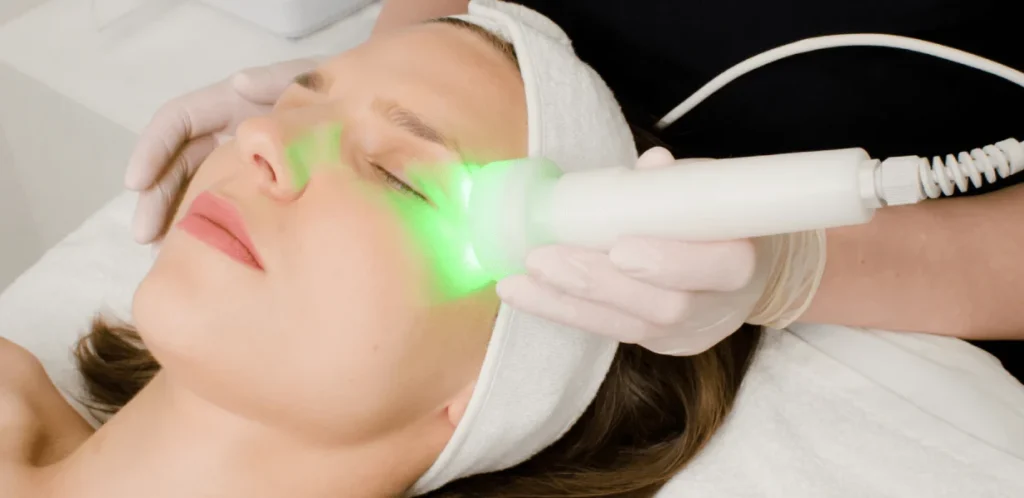
Diverse Modalities of UV Light Therapy
UV Light Therapy, a versatile and effective treatment for various skin conditions, employs different types of ultraviolet light, each with its specific applications and benefits. Understanding these distinct forms – UVA, Narrowband UVB, and Broadband UVB – is crucial in tailoring treatment to individual patient needs.
UVA and PUVA Treatments
UVA, the longest wavelength of ultraviolet light used in phototherapy, is often utilized in conjunction with photosensitizing drugs in a treatment known as PUVA (Psoralen and UVA). This combination is particularly effective for more severe skin conditions.
- Mechanism: Psoralen, taken orally or applied topically, makes the skin more responsive to UVA light. When the skin is then exposed to UVA, the treatment becomes more potent, leading to improved outcomes.
- Conditions Treated: PUVA is primarily used for conditions like psoriasis, eczema, and vitiligo. It is especially beneficial for patients with extensive or resistant skin lesions.
- Procedure: The process involves administering psoralen before exposing the skin to UVA light. This exposure is carefully timed and controlled to maximize efficacy while minimizing side effects.
- Advantages and Considerations: PUVA is known for its deep penetration and effectiveness. However, it requires close monitoring due to the increased sensitivity of the skin to light, and there are specific guidelines regarding sun exposure and eye protection during treatment.
Narrowband UVB Therapy
Narrowband UVB has become a preferred method of UV Light Therapy due to its safety and effectiveness.
- Specificity: Narrowband UVB emits a more specific range of UV wavelengths, typically around 311 nm. This specificity makes it more effective and reduces potential side effects compared to broader UVB wavelengths.
- Conditions Treated: It is particularly effective in treating psoriasis and vitiligo. For psoriasis, it helps reduce inflammation and slow the overproduction of skin cells. In vitiligo, it stimulates melanocyte activity, promoting repigmentation.
- Procedure: Treatment involves exposing the skin to narrowband UVB light in a controlled environment, usually two to three times a week. The duration of exposure is gradually increased based on the patient’s response.
- Advantages: Narrowband UVB is preferred for its targeted action and reduced risk of skin burning compared to broadband UVB. It’s also effective without the need for additional medications.
Broadband UVB Therapy
Broadband UVB, emitting a broader range of UV wavelengths, is an older form of UVB therapy that is less commonly used today but still effective for certain skin conditions.
- Spectrum: Broadband UVB covers a wider range of UV wavelengths, which can be beneficial for some skin types and conditions.
- Conditions Treated: It is used to treat psoriasis, eczema, and other less common skin disorders. Its effectiveness varies depending on the condition and the individual’s response.
- Procedure: Similar to narrowband UVB, the treatment involves exposing the skin to UV light. However, the broader spectrum requires careful monitoring to avoid overexposure.
- Considerations: While broadband UVB can be effective, it carries a higher risk of skin burning and long-term skin damage compared to narrowband UVB. Its use has declined with the advent of narrowband UVB and other targeted therapies
The Comprehensive Advantages of UV Light Therapy
UV Light Therapy has proven to be a highly effective treatment for various skin conditions, each benefiting from the therapy in unique ways. Understanding these benefits provides insight into how this therapy can be a game-changer for those suffering from chronic skin issues.
Psoriasis: Alleviating Symptoms through UV Light Therapy
Psoriasis, characterized by red, itchy, and scaly patches on the skin, can be significantly alleviated through UV Light Therapy.
- Reducing Inflammation: UV light, particularly UVB, is effective in reducing the inflammation associated with psoriasis. This reduction in inflammation leads to a decrease in redness and discomfort.
- Slowing Cell Growth: One of the primary issues in psoriasis is the rapid growth of skin cells. UV Light Therapy helps slow down this overproduction, reducing the formation of scales and plaques on the skin.
- Long-Term Relief: Regular sessions of UV Light Therapy can lead to prolonged periods of remission, reducing the frequency and severity of psoriasis flare-ups.
- Improving Quality of Life: By diminishing the physical symptoms, UV Light Therapy can significantly improve the quality of life for psoriasis sufferers, enhancing their comfort and self-esteem.
Vitiligo: Promoting Pigmentation through UV Light Therapy
Vitiligo, known for its white patches on the skin, results from the loss of melanocytes, the cells responsible for skin pigment.
- Stimulating Melanocyte Production: UV Light Therapy, particularly narrowband UVB, has been shown to stimulate the remaining melanocytes in the skin, encouraging the repigmentation process.
- Targeted Treatment: UV Light Therapy can be targeted to the affected areas, promoting pigment production precisely where it’s needed.
- Progressive Improvement: While the process can be gradual, consistent treatment often leads to a noticeable improvement in skin coloration, helping to blend vitiligo patches with the surrounding skin.
- Enhancing Emotional Well-being: The restoration of normal skin appearance can have a profound impact on the emotional and psychological well-being of individuals with vitiligo.
Eczema: Easing Symptoms with UV Light Therapy
Eczema, or atopic dermatitis, often presents as itchy, inflamed, and dry skin. UV Light Therapy can provide significant relief.
- Relieving Itching: One of the most distressing symptoms of eczema is intense itching. UV Light Therapy helps alleviate this itching, providing much-needed relief.
- Reducing Inflammation: By decreasing inflammation, UV Light Therapy can reduce the redness and swelling associated with eczema.
- Improving Skin Barrier Function: Regular treatment can enhance the skin’s barrier function, helping to retain moisture and protect against irritants and allergens.
- Reducing Dependence on Medications: UV Light Therapy can decrease the need for topical steroids and other medications, reducing the potential for side effects associated with long-term medication use.
Discover UV Light Therapy at Relive Health Hendersonville
At Relive Health Hendersonville, we stand at the forefront of dermatological innovation, offering advanced UV Light Therapy treatments that are reshaping the approach to skin health and wellness. Our commitment to excellence in this field is evident in every aspect of our service, from the state-of-the-art technology we employ to the personalized care we provide to each of our clients.
Cutting-Edge UV Light Therapy Services
- Advanced Technology: We utilize the latest advancements in UV Light Therapy, ensuring that our clients have access to the most effective and safe treatment options available. Our equipment is regularly updated to stay abreast of the latest developments in phototherapy.
- Diverse Treatment Options: Understanding that each skin condition requires a unique approach, we offer a range of UV Light Therapy treatments, including UVA, narrowband UVB, and broadband UVB. This diversity allows us to tailor treatments to the specific needs of each individual.
Expertise and Personalized Care
- Skilled Professionals: Our team comprises highly trained and experienced dermatologists and therapists who specialize in UV Light Therapy. They possess a deep understanding of skin conditions and are adept at customizing treatments to achieve the best possible outcomes.
- Individualized Treatment Plans: We believe in a personalized approach to skin care. Each client undergoes a thorough assessment, allowing us to develop a treatment plan that is specifically tailored to their condition, skin type, and lifestyle.
- Comprehensive Support: Our care extends beyond the treatment sessions. We provide comprehensive support, including guidance on how to prepare for therapy, what to expect during treatment, and how to care for your skin afterward.
A Holistic Approach to Skin Health
- Integrative Treatment Strategies: At Relive Health Hendersonville, we view UV Light Therapy as part of a broader, integrative approach to skin health. We often combine phototherapy with other treatments and lifestyle advice to maximize the therapeutic benefits.
- Education and Empowerment: We believe in empowering our clients with knowledge about their conditions and the treatments available. Our experts spend time educating clients on how UV Light Therapy works and how it can be a part of a long-term strategy for managing their skin conditions.
Safe and Comfortable Environment
- Safety First: The safety of our clients is our top priority. We adhere to strict safety protocols to ensure that each session of UV Light Therapy is delivered in the safest manner possible.
- Comfortable and Welcoming Atmosphere: Our facility is designed to provide a comfortable and relaxing environment. We want our clients to feel at ease during their visits, making their treatment experience as pleasant and stress-free as possible.
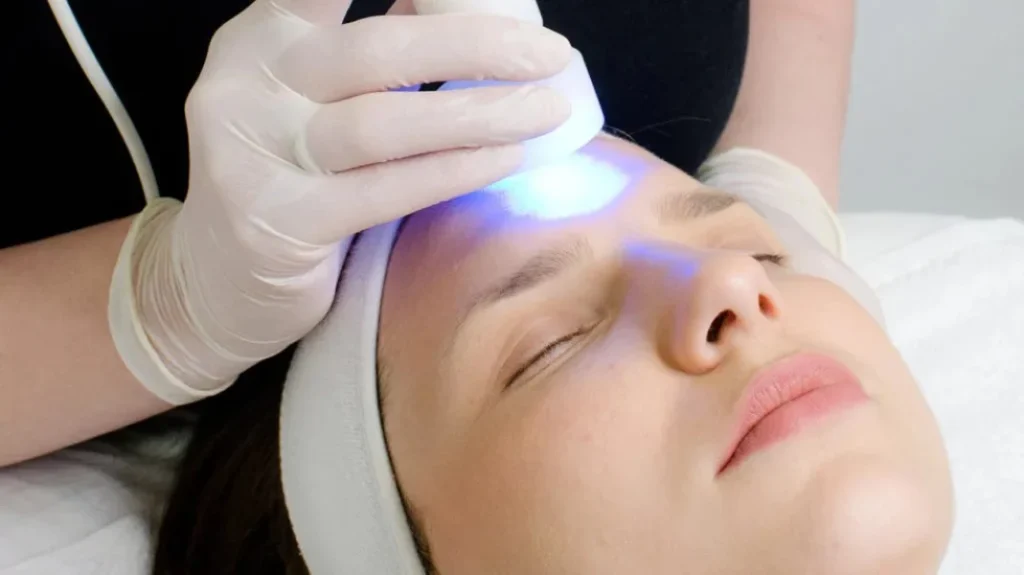
Preparing for Your UV Light Therapy Session
To fully harness the benefits of UV Light Therapy, proper preparation is key.
Prior to Your Session
To ensure the utmost efficacy and safety of UV Light Therapy, certain preparatory steps are essential. At Relive Health Hendersonville, we emphasize the importance of a comprehensive pre-treatment protocol, which includes a detailed consultation, skin protection measures, and appropriate apparel choices.
Consultation: The Foundation of Personalized Treatment
- In-Depth Medical Review: The consultation begins with a thorough evaluation of your medical history. This includes discussing any past and present skin conditions, allergies, and overall health concerns.
- Medication Assessment: An essential part of the consultation is reviewing your current medications. Some medications can increase skin sensitivity to UV light, and it’s crucial to adjust the treatment plan accordingly.
- Treatment Objectives and Expectations: We also discuss your treatment goals and what you can expect from the therapy. This is an opportunity to address any questions or concerns you may have.
- Customized Treatment Plan: Based on the consultation, we develop a personalized treatment plan that aligns with your specific needs and health profile.
Skin Protection: Safeguarding Your Skin
- Avoiding Sun Exposure: To minimize the risk of overexposure to UV light, we advise avoiding sun exposure for at least 24 hours before your treatment. This precaution helps reduce the likelihood of adverse reactions, such as burns or excessive skin irritation.
- Sunscreen Use: If avoiding sun exposure is not entirely possible, using a broad-spectrum sunscreen is recommended to protect the areas that will not be treated during the therapy.
- Skin Care Regimen: We also recommend a gentle skin care regimen leading up to your treatment. This includes avoiding the use of exfoliating agents or products that may sensitize the skin.
Apparel: Comfort and Convenience
- Loose Clothing: For your comfort and to facilitate easy access to the treatment areas, we suggest wearing loose, comfortable clothing to your appointment. Tight clothing can irritate the skin, especially after treatment.
- Fabric Considerations: Opting for soft, breathable fabrics like cotton can help keep your skin comfortable before and after the therapy session.
- Easy-to-Remove Garments: Choosing clothing that is easy to remove and put on is advisable, as some treatments may require exposing large areas of the skin.
Additional Pre-Treatment Tips
- Hydration: Keeping your skin well-hydrated is important. We recommend moisturizing your skin regularly in the days leading up to your treatment, but avoid applying lotions or creams immediately before the session.
- Diet and Hydration: Maintaining a healthy diet and staying hydrated can also positively impact your skin’s condition and response to treatment.
- Rest and Relaxation: Getting adequate rest and minimizing stress before your treatment can enhance your body’s readiness for therapy and its ability to heal.
Post-Session Care
After undergoing UV Light Therapy at Relive Health Hendersonville, it’s crucial to follow specific post-treatment care guidelines to maximize the benefits of the therapy and maintain the health of your skin. These guidelines include proper moisturization, diligent sun protection, and consistent follow-up appointments.
Moisturization: Nurturing Your Skin Post-Therapy
- Importance of Hydration: Post-treatment skin can often feel dry or sensitive. Applying a gentle moisturizer helps to replenish lost moisture and maintain the skin’s natural hydration balance.
- Choosing the Right Moisturizer: We recommend using a hypoallergenic and fragrance-free moisturizer to minimize the risk of irritation. Products containing soothing ingredients like aloe vera or hyaluronic acid can be particularly beneficial.
- Frequency of Application: Regular application of moisturizer is key. We advise moisturizing the treated areas at least twice a day, or more often if your skin feels particularly dry.
- Avoiding Irritants: It’s important to avoid moisturizers with harsh chemicals, dyes, or fragrances that could irritate the skin.
Sun Protection: Shielding Your Skin from Harmful Rays
- Avoiding Direct Sunlight: After UV Light Therapy, your skin becomes more sensitive to sunlight. It’s essential to protect the treated areas from direct sun exposure to prevent sunburn and other UV-related skin damage.
- Using Sunscreen: When sun exposure is unavoidable, apply a broad-spectrum sunscreen with an SPF of 30 or higher to the treated areas. Reapply sunscreen every two hours, or more frequently if you are sweating or swimming.
- Wearing Protective Clothing: In addition to sunscreen, wearing clothing that covers the treated areas, such as long-sleeved shirts and wide-brimmed hats, can provide additional protection.
- Seeking Shade: Whenever possible, stay in shaded areas, especially during peak sunlight hours.
Consistent Follow-Up: Ensuring Optimal Treatment Results
- Adhering to Treatment Schedule: Regular attendance at all scheduled UV Light Therapy sessions is crucial for achieving the best outcomes. Missing sessions can delay or reduce the effectiveness of the treatment.
- Monitoring Progress: During your follow-up appointments, our specialists will assess your skin’s response to the treatment, allowing us to make any necessary adjustments to your therapy plan.
- Communication with Your Provider: Keeping an open line of communication with your healthcare provider is important. Report any concerns or side effects you experience between sessions.
- Long-Term Care Plan: Consistent follow-up appointments also help us develop a long-term care plan to maintain the health and appearance of your skin post-treatment.
Additional Post-Treatment Considerations
- Skin Sensitivity: Be aware that your skin may be more sensitive to certain products or environmental factors post-treatment. It’s advisable to avoid harsh soaps, hot water, and abrasive scrubbing on the treated areas.
- Hydration and Nutrition: Maintaining good hydration and a balanced diet can support skin health and aid in the healing process.
- Rest and Recovery: Giving your body adequate rest and avoiding strenuous activities immediately after treatment can also be beneficial.
Conclusion
UV Light Therapy stands as a beacon of the remarkable curative properties of light. Its efficacy in treating a variety of skin conditions, supported by a rich historical background, establishes it as a reliable and esteemed choice in dermatological care. At Relive Health Hendersonville, we are dedicated to bringing this extraordinary therapy to you, enhancing your health and well-being through the power of light.
